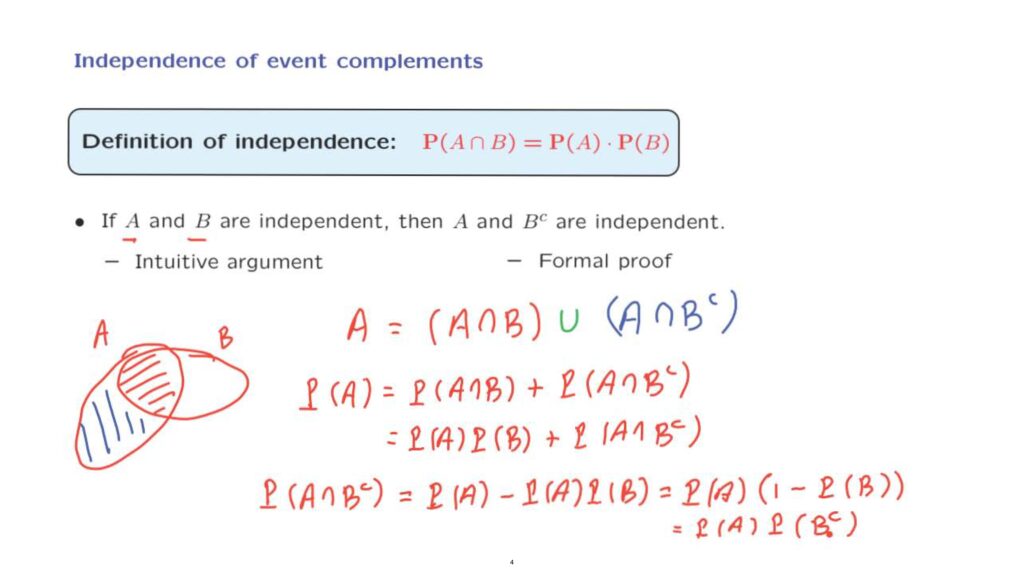Let us now discuss an interesting fact about independence that should enhance our understanding.
Suppose that events A and B are independent.
Intuitively, if I tell you that A occurred, this does not change your beliefs as to the likelihood that B will occur.
But in that case, this should not change your beliefs as to the likelihood that B will not occur.
So A should be independent of B complement.
In other words, the occurrence of A tells you nothing about B, and therefore tells you nothing about B complement either.
This was an intuitive argument that if A and B are independent, then A and B complement are also independent.
But let us now verify this intuition through a formal proof.

The formal proof goes as follows.
We have the two events, A and B.
And event A can be broken down into two pieces.
One piece is the intersection of A with B.
So that’s the first piece.
And the second piece is the part of A which is outside B.
And that piece is A intersection with the complement of B.
So these are the two pieces that together comprise event A.
Now, these two pieces are disjoint from each other.
And therefore, by the additivity axiom, the probability of A is equal to the probability of A intersection B plus the probability of A intersection with B complement.
Using independence, the first term becomes probability of A times probability of B.
And we leave the second term as is.
Now let us move this term to the other side.
And we obtain that the probability of A intersection with B complement is the probability of A minus the probability of A times the probability of B.
We factor out the term probability of A, and we are left with 1 minus probability of B.
And then we recognize that 1 minus the probability of B is the same as the probability of B complement.
So we proved that the probability of A and B complement occurring together is the product of their individual probabilities.
And that’s exactly the definition of A being independent from B complement.
And this concludes the formal proof.